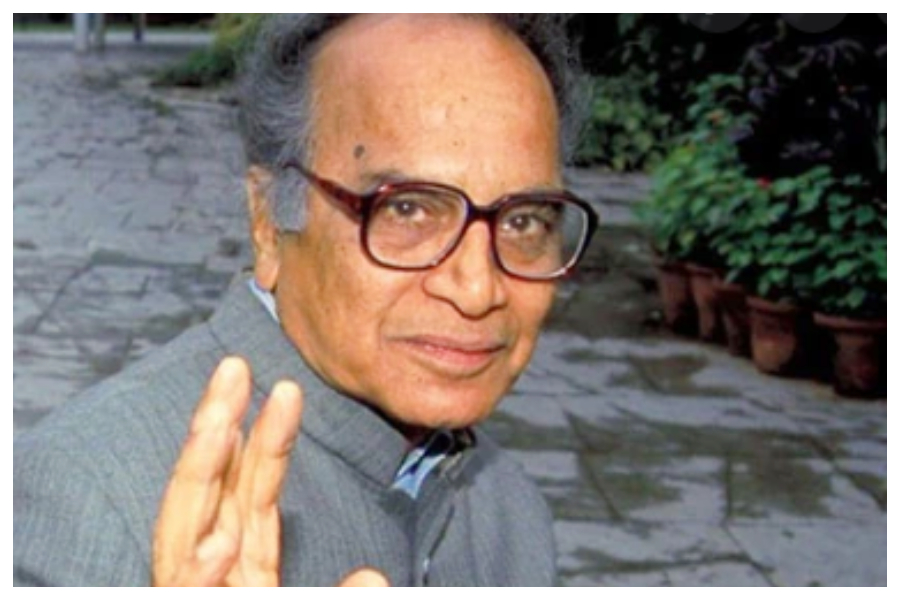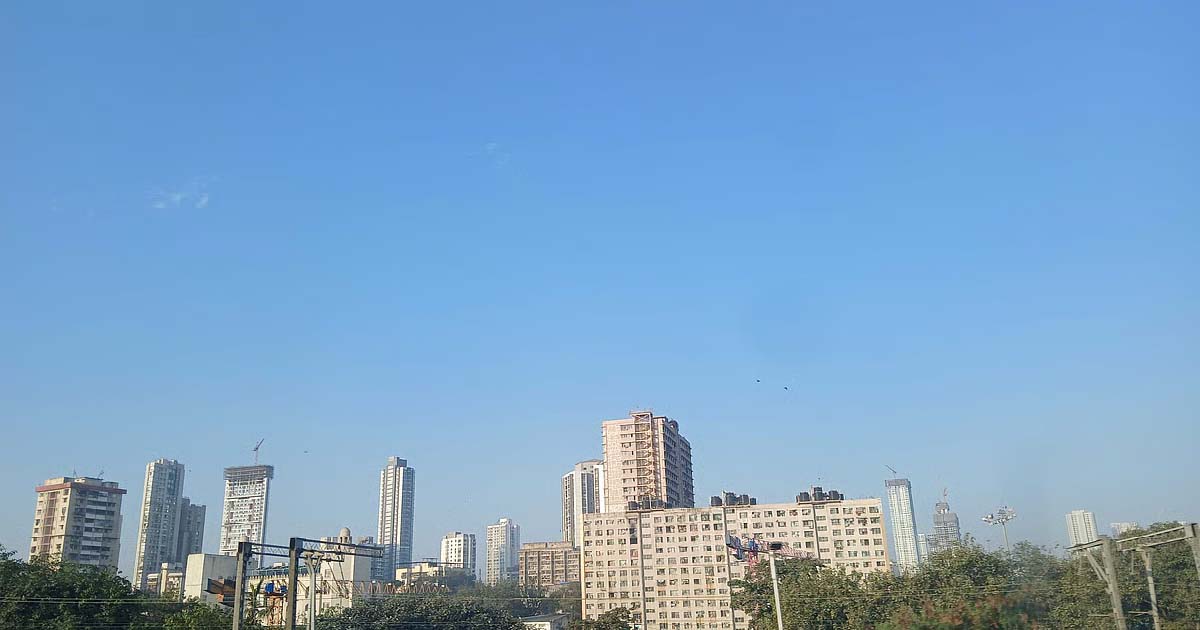National News
Did Jagmohan really fail as J&K Governor in 1990?

Did Jagmohan Malhotra fail as the Governor of Jammu and Kashmir during his second term when militancy blew out of control in 1990?
The answer to this question may be difficult, but it is not impossible to find.
Rubaiya Sayeed, the daughter of Mufti Mohammad Sayeed, was kidnapped by the JKLF on December 8, 1989. Mufti Mohammad Sayeed was the country’s Home Minister and his political arch-rival, Farooq Abdullah, was the Chief Minister of the state that time.
It is widely believed that Abdullah did want to agree with the release of five top JKLF leaders who were in prison in exchange for Rubaiya’s safe release by her abductors.
Abdullah insisted that accepting the JKLF demand would give a major boost to militancy and create a congenial atmosphere for future kidnapping by the militants.
Mufti Sayeed and his family members asserted that by refusing to release the JKLF prisoners, Abdullah was trying to settle a longstanding political grudge against Sayeed.
It was against this background that the Central government headed by V.P. Singh sent Jagmohan as the new Governor of the state.
Jagmohan took office on January 19, 1990, and Abdullah resigned as the Chief Minister the same day.
It is common knowledge that had Abdullah not resigned, Jagmohan would have dismissed his council of ministers.
A huge Pro-Azadi procession was carried out in Srinagar and the security forces intercepted the procession in Gaw Kadal area on January 21, 1990.
Fifty protesters were killed in firing by the security forces in Gaw Kadal and the incident happened barely two days after Jagmohan assumed office.
It is believed that the Gaw Kadal procession had a large number of Avdullah’s supporters, who found an occasion to vent their anger against the appointment of Jagmohan as the state’s Governor.
A large majority of top brass in the local police and the civil administration belonged to the loyalists of the Abdullah family. There was a total non-cooperation by the local officers with Jagmohan and his advisors.
This forced Jagmohan to quickly bring some senior police and civil officers from outside to re-establish the writ of law.
During this period, militants killed Mirwaiz Molvi Mohammad Farooq in his Nigeen residence in Hazratbal area of Srinagar. Militants believed that Mirwaiz was negotiating peace with the Governor’s administration.
The funeral procession was mishandled by the local police and the state intelligence totally failed to alert Jagmohan that militants had joined the funeral procession.
Outside the Islamia College, Central intelligence agencies said, militants opened fire at a CRPF bunker.
In panic, the security forces fired directly at the funeral procession and in this incident, 60 people were reportedly killed on May 21, 1990.
Jagmohan had to face the wrath of the same Central government that had sent him as the Governor of the state for the second term since he had proved himself as the most popular Governor during his first term.
Following a hostile administration, the anger of the separatists supported by the activists of the National Conference and with hardly any time to put his act together, Jagmohan was recalled by the Centre and General Krishna Rao was rushed to replace him.
The question whether Jagmohan really failed as the Governor of J&K during his second term has a logical answer.
Jagmohan hardly had the time to re-establish the authority of an administration that had spinelessly surrendered before the separatists.
It was literally a one-man show as Jagmohan found every wing of his administration infiltrated by the anti-nationals and their sympathisers.
It is said that their supporters in the local intelligence took away secret documents from official files and gave their copies to the militants to identify their targets.
In some cases, the separatist loyalists acting in absolute haste kept photocopies of the files and instead gave the originals to the militants.
Faced with these realities, four months were no time for Jagmohan to either prove himself or reclaim the authority of a crippled administration.
He was failed by the very hands with which he was supposed to succeed.
National News
Mumbai Infrastructure News: BMC’s Mahalaxmi Cable-Stayed Bridge Project 45 Per Cent Complete; New Deadline Set For December 2026

Mumbai: Work on the city’s first cable-stayed bridge by the BMC over the Mahalaxmi railway tracks is 45% complete. Originally slated for completion in March 2024, the project has been delayed due to encroachments and the relocation of trees, with the new target date now set for December 2026.
At the heart of the bridge’s design is a 70-metre-high pylon, which will serve as the primary support structure. Once operational, the bridge will ease congestion near Mahalaxmi station and improve east–west connectivity for motorists heading toward the Coastal Road from Haji Ali.
The bridge will rise from the Racecourse side along Keshavrao Khadye (KK) Marg in the west, traverse the Western Railway tracks, and conclude near Shirin Talkies on the eastern stretch of KK Marg. The BMC awarded the work order in January 2020, with construction commencing the following month.
Given that the main span across the railway lines extends 165 metres, a conventional bridge design was considered unfeasible, the civic body opted for a more advanced cable-stayed structure to meet the engineering challenge.
Notably, this marks the first instance of the BMC independently undertaking the construction of a cable-stayed bridge over railway tracks. The 736-metre-long structure includes a 165-metre cable-stayed span with an 85-metre back span and a 23-metre-wide deck carrying four traffic lanes.
Estimated to cost Rs 389 crore, the bridge will replace the existing structure, which will be dismantled once the new bridge becomes operational to ensure uninterrupted connectivity during construction.
A senior civic official said, “The project faced delays due to the impact on nearby houses, establishments, and trees, along with design changes needed after identifying key utilities such as water channels, sewer lines, stormwater drains, and BEST cables along the alignment.”
As per the schedule, the 90-metre western span will be completed by December 2025, while the 160-metre eastern span will be completed by September 2026. Approach roads will be built in parallel, with the entire project set for completion by December 2026.
Business
Centre to launch third round of PLI scheme for specialty steel

New Delhi, Nov 4: The government was set to launch the third round of the production-linked incentive (PLI) scheme for Specialty Steel on Tuesday, which is one of the key initiatives under the Atmanirbhar Bharat vision.
The PLI 1.2 launch will be presided over by Union Minister H.D. Kumaraswamy, in the presence of senior officials, and other stakeholders from the sector, according to Ministry of Steel.
The ministry said that the PLI Scheme for Specialty Steel, approved by the Union Cabinet in July 2021 with an overall outlay of Rs 6,322 crore, aims to transform India into a global hub for production of high-value and advanced steel grades.
The PLI scheme has attracted a committed investment of Rs 43,874 crore so far, with Rs 22,973 crore already invested and over 13,000 jobs created under the first two rounds.
The scheme covers 22 product sub-categories including super alloys, CRGO, alloy forgings, stainless steel (long and flat), titanium alloys, and coated steels.
Incentive rates range from 4 per cent to 15 per cent, applicable for five years starting FY 2025–26, with disbursal beginning in FY 2026–27.
The base year for pricing has also been updated to FY 2024–25 to better reflect current trends.
The PLI scheme incentivises incremental production and investment in identified product categories, thereby enhancing value addition within the country and reducing import dependence in critical sectors such as defence, power, aerospace and infrastructure.
Meanwhile, the country aims to achieve 300 million tonnes of crude steel production capacity by 2030. Notably, India’s domestic steel demand is growing at an impressive 11-13 per cent, fuelled by large-scale infrastructure projects, while global demand faces a slowdown, according to Steel Ministry.
Steel production surged by a robust 14.1 per cent in September compared to the same month of the previous year on the back of increased demand from big-ticket infrastructure projects being carried out by the government.
National News
Mumbai Weather Update: City Wakes Up To Clear Skies, AQI Dips To Moderate Category At 64

Mumbai: Mumbai woke up to bright, clear skies on Tuesday morning after moderate rainfall the previous evening brought much-needed relief from both heat and pollution. The India Meteorological Department (IMD) forecasted partly cloudy conditions throughout the day, with possibilities of light to moderate showers or isolated thunderstorms in some areas.
According to IMD’s latest weather update, temperatures are expected to stay pleasant, with a maximum of around 32°C and a minimum near 24°C. The light showers have not only cooled the city but also helped in significantly improving its deteriorating air quality. Over the past few weeks, stagnant air and rising pollution had led to hazy skies and poor visibility across Mumbai.
Data from AQI.in on Tuesday morning showed a remarkable improvement in air quality levels. Mumbai’s overall Air Quality Index (AQI) was recorded at 64, categorised as moderate, which deteriorated slightly from the good quality air recorded over the past few days. Residents across several areas reported fresher air and reduced smog.
Among the city’s various monitoring locations, Chembur registered the highest AQI at 113, placing it in the poor category. However, most other areas reflected the overall improvement. Jogeshwari recorded an AQI of 80, Mankhurd 77, and both Malad West and Wadala Truck Terminal stood at 72, all within the moderate range.
Cleaner air was observed in several localities, including Kurla and Kandivali East (both at 52), Sion (55), Bandra East (57) and Colaba (57), showing a citywide recovery in air quality.
According to AQI.in’s classification system, an index reading between 0 and 50 is considered “Good,” 51–100 “Moderate,” 101–150 “Poor,” 151–200 “Unhealthy,” and values above 200 fall into the “Severe” or “Hazardous” category.
-

 Crime3 years ago
Crime3 years agoClass 10 student jumps to death in Jaipur
-

 Maharashtra1 year ago
Maharashtra1 year agoMumbai Local Train Update: Central Railway’s New Timetable Comes Into Effect; Check Full List Of Revised Timings & Stations
-

 Maharashtra1 year ago
Maharashtra1 year agoMumbai To Go Toll-Free Tonight! Maharashtra Govt Announces Complete Toll Waiver For Light Motor Vehicles At All 5 Entry Points Of City
-

 Maharashtra1 year ago
Maharashtra1 year agoFalse photo of Imtiaz Jaleel’s rally, exposing the fooling conspiracy
-

 National News1 year ago
National News1 year agoMinistry of Railways rolls out Special Drive 4.0 with focus on digitisation, cleanliness, inclusiveness and grievance redressal
-

 Maharashtra12 months ago
Maharashtra12 months agoMaharashtra Elections 2024: Mumbai Metro & BEST Services Extended Till Midnight On Voting Day
-

 National News1 year ago
National News1 year agoJ&K: 4 Jawans Killed, 28 Injured After Bus Carrying BSF Personnel For Poll Duty Falls Into Gorge In Budgam; Terrifying Visuals Surface
-

 Crime1 year ago
Crime1 year agoBaba Siddique Murder: Mumbai Police Unable To Get Lawrence Bishnoi Custody Due To Home Ministry Order, Says Report












